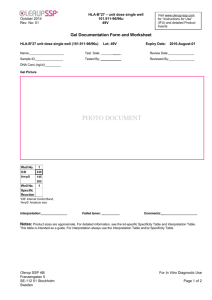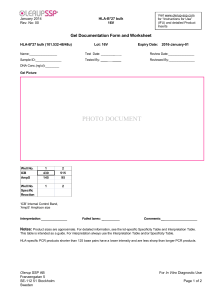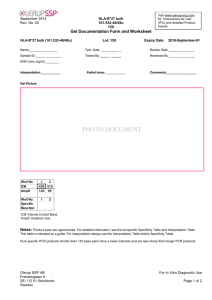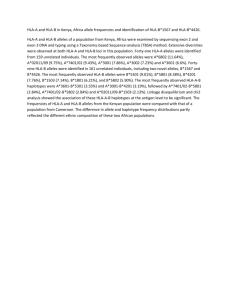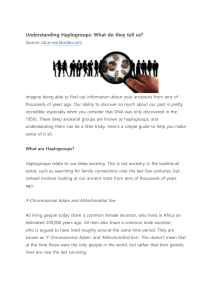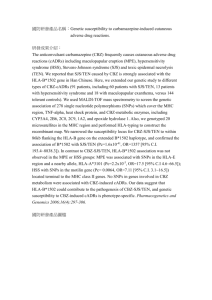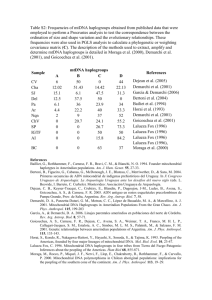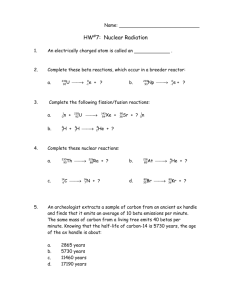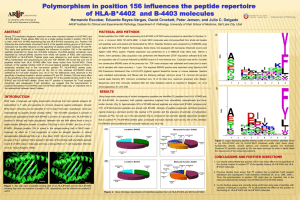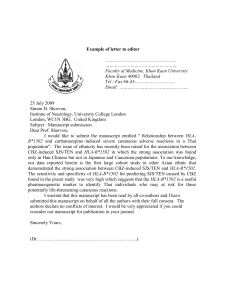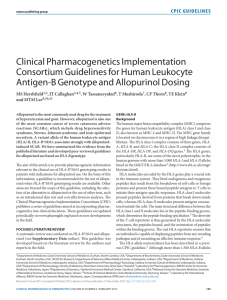phylogenetic n
advertisement
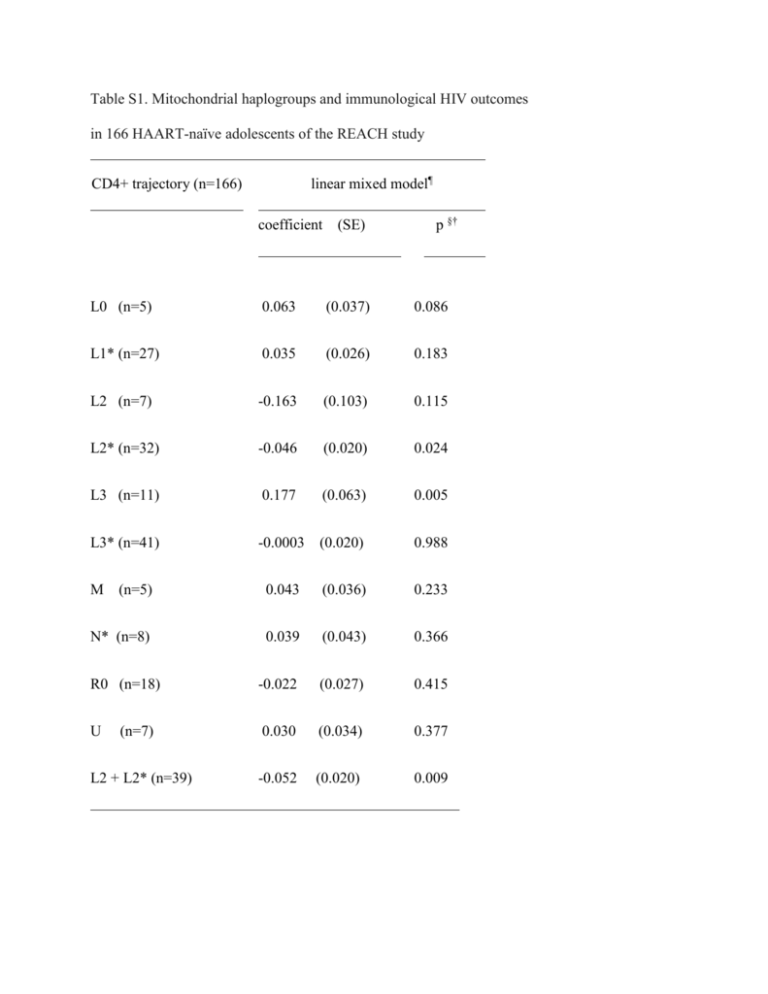
Table S1. Mitochondrial haplogroups and immunological HIV outcomes in 166 HAART-naïve adolescents of the REACH study linear mixed model¶ CD4+ trajectory (n=166) coefficient (SE) p §† L0 (n=5) 0.063 (0.037) 0.086 L1* (n=27) 0.035 (0.026) 0.183 L2 (n=7) -0.163 (0.103) 0.115 L2* (n=32) -0.046 (0.020) 0.024 L3 (n=11) 0.177 (0.063) 0.005 L3* (n=41) -0.0003 (0.020) 0.988 (n=5) 0.043 (0.036) 0.233 N* (n=8) 0.039 (0.043) 0.366 R0 (n=18) -0.022 (0.027) 0.415 U (n=7) 0.030 (0.034) 0.377 L2 + L2* (n=39) -0.052 (0.020) 0.009 M Footnote to Table S1 (*) macro-haplogroups as defined in the histogram of Figure 1. Note that non-L haplogroups H, HV, V and root R0 were grouped as R0, and the U and K haplogroups as U. (¶) models adjusted for the effects of gender, baseline age and HLA-B. (§) p-values adjusted for multiple comparisons (Tukey-Kramer adjustment). Note that only clades or macrohaplogroups with a frequency greater than 3% are shown. SE= standard error of the mean. . (†) Parameter estimates for the covariates in the model with L3 as predictors were for HLA-B*35 (beta= -2.58; SE=1.28; p= 0.043), HLA-B*57 or HLA-B*27 (beta=3.48; SE=1.32; p=0.009), gender (beta= -1.61; SE=1.02; p =0.114) and for age at baseline (beta= -0.33; SE=0.22; p=0.133). (†) Parameter estimates for the covariates in the model with L2 & L2* as predictors were for HLA-B*35 (beta= -2.72; SE=1.26; p= 0.031), HLA-B*57 or HLA-B*27 (beta=3.46; SE=1.30; p=0.008), gender (beta= -1.87; SE=1.00; p =0.062) and for age at baseline (beta= -0.33; SE=0.22; p=0.128). Supplementary Figure S1. Flow diagram showing the REACH study groups sampled for the study of virologic and immunologic outcomes of HIV infection REACH HIV-positive and HAART-naive participants (n=343) Participants with typed mitochondrial DNA (n=317) Eligible for CD4 count trajectory analysis All ethnic groups (n=166) Non-Hispanic African Americans (n=133) Eligible for setpoint VL analysis All ethnic groups (n=99) Non-Hispanic African Americans (n=91) Supplementary Figure S2. Phylogenetic tree of the global human mitochondrial DNA variation. Phylogenetic tree based on both coding- and control-region mutations showing the haplogroup nomenclature and the position of the revised Cambridge reference sequence (rCRS). (mtMRCA) matrilineal most recent common ancestor. For convenience, the clades under the eight sub-trees aligned at the bottom of the figure are not shown. The asterisk symbol (*) refers to paragroups, which are different yet unidentified clades. Note that the group of L2 mtDNA haplogroups associated with the decline of CD4+ T-cells is not shown in this summary mitochondrial phylogenetic tree. R0, the mtDNA haplogroup marginally associated with high setpoint viral load in the REACH study, is shown in red. (Figure adapted from http://www.phylotree.org/tree/main.htm) [1]. 1. van Oven M, Kayser M. Updated comprehensive phylogenetic tree of global human mitochondrial DNA variation. Hum Mutat 2009,30:E36-394.
